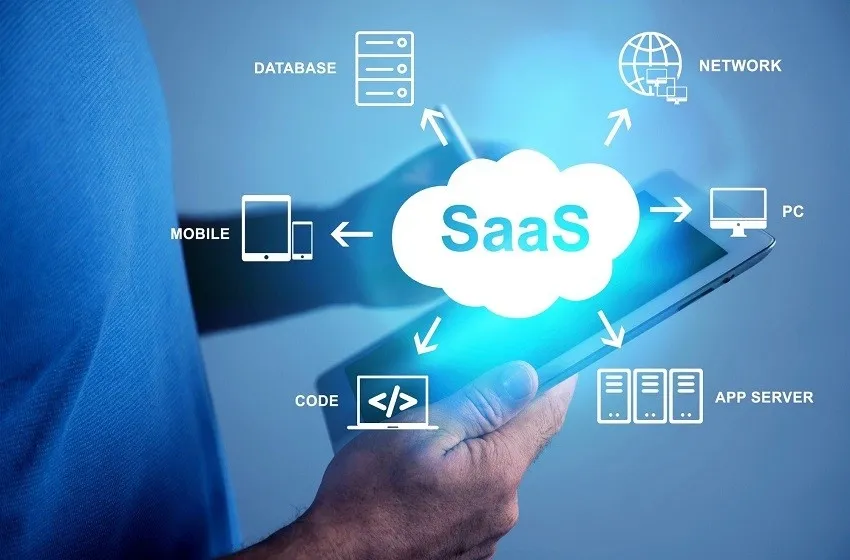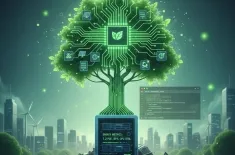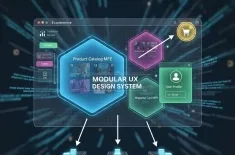Software as a Service (SaaS) is a cloud-based software delivery model where applications are accessed over the internet. This eliminates the need for local installations and provides users with on-demand access to software, updates, and support. SaaS solutions are becoming increasingly popular due to their affordability, scalability, and ease of use.
Software as a Service (SaaS) is a cloud computing model that allows users to access software applications over the internet without the need for installation or maintenance on their local devices. This delivery model is fundamentally changing how software is consumed, delivered, and managed, reflecting a broader shift toward cloud-based services and solutions in today’s technology landscape.
Key Characteristics of SaaS
- Accessibility: SaaS applications can be accessed from any device with internet connectivity, whether it’s a desktop computer, laptop, tablet, or smartphone. This is made possible through web browsers, allowing for ease of access and convenience for users.
- Subscription-Based Pricing: Most SaaS offerings operate on a subscription model where users pay a recurring fee (monthly or annually) instead of making a large upfront investment in software licenses. This pricing model allows businesses to manage their budgets more effectively and access advanced software capabilities without hefty one-time costs.
- Automatic Updates and Upgrades: SaaS providers manage all aspects of the software, including hosting, infrastructure, updates, and security. This means users always have access to the latest features and enhancements without needing to worry about installing updates themselves.
- Scalability: SaaS solutions are highly scalable, meaning businesses can easily adjust their usage based on their needs. Organizations can subscribe to different levels of service, add or remove user licenses, and access additional features as required.
- Multi-Tenancy: In a SaaS architecture, multiple users or tenants share the same application. This multi-tenancy structure allows providers to optimize resources and reduce costs, which can be passed on to customers.
- Integration and APIs: SaaS applications often provide APIs (Application Programming Interfaces) that allow for integration with other software systems. This makes it possible for organizations to build customized workflows or use complementary tools seamlessly.
Examples of SaaS Applications
Several well-known SaaS applications illustrate the range and capability of this software model. Here are a few notable examples:
- Salesforce: One of the leading Customer Relationship Management (CRM) platforms, Salesforce helps businesses manage customer relationships, sales data, and marketing activities in one unified environment.
- Google Workspace (formerly G Suite): This collection of cloud-based productivity tools includes Gmail, Google Docs, Google Drive, and more, allowing users to collaborate and communicate efficiently in a cloud environment.
- Microsoft 365: A subscription service that includes access to Office applications and other productivity tools. Microsoft 365 allows users to work collaboratively wherever they are, using real-time editing features and cloud storage.
- Slack: A popular collaboration and messaging platform that enables teams to communicate and work together more effectively. With channels, direct messaging, and integrations with other tools, Slack enhances team productivity and connectivity.
- Zoom: An online video conferencing tool that became particularly popular during the COVID-19 pandemic. Zoom allows users to hold virtual meetings, webinars, and conferences with ease, making remote communication more accessible.
- Shopify: An e-commerce platform that allows businesses to set up and run their online store quickly. With various templates and integrated payment solutions, Shopify enables entrepreneurs to manage their sales, inventory, and customer engagement.
SaaS and Cloud Computing
SaaS is one of the many models of cloud computing, which generally encompasses three main service models: Software as a Service (SaaS), Platform as a Service (PaaS), and Infrastructure as a Service (IaaS).
-
Infrastructure as a Service (IaaS) provides virtualized computing resources over the internet, allowing users to rent servers, storage, and networking resources from cloud providers like Amazon Web Services (AWS) or Microsoft Azure.
-
Platform as a Service (PaaS) offers a platform for developers to build, deploy, and manage applications without dealing with the complexities of infrastructure management. Examples of PaaS include Heroku and Google App Engine.
SaaS fits within this ecosystem by offering end-users ready-to-use software applications, with the underlying infrastructure and platform abstracted away. This allows organizations to focus on their core business activities rather than IT management.
Benefits of SaaS
- Cost-Effectiveness: With lower startup costs and reduced IT management expenses, SaaS can significantly lower the total cost of ownership for software solutions.
- Flexibility and Mobility: SaaS applications can be accessed from anywhere, facilitating remote work opportunities and flexibility for users.
- Rapid Deployment: SaaS solutions can be rolled out quickly, allowing organizations to start using the software almost immediately after subscribing.
- Enhanced Collaboration: Many SaaS applications are designed around collaboration, enabling multiple users to work together in real-time regardless of their physical locations.
- Environmental Sustainability: By utilizing centralized infrastructure in data centers rather than on-site hardware, SaaS can contribute to energy efficiency and sustainability, reducing an organization’s carbon footprint.
Challenges of SaaS
Despite the many benefits of Software as a Service, it is not without its challenges. Organizations considering the adoption of SaaS should be aware of potential issues:
- Data Security and Privacy Concerns: With data stored off-premises on the servers of SaaS providers, businesses may worry about the security of their sensitive information. Data breaches and unauthorized access can pose significant risks, making it essential for organizations to assess the security practices of their chosen provider.
- Dependency on Internet Connectivity: SaaS applications require reliable internet access. Any connectivity issues can hinder business operations and productivity, so organizations need to ensure they have dependable internet service.
- Limited Customization: While many SaaS options provide various features and functionalities, there can be limitations in customization compared to on-premises software. Businesses may find it challenging to tailor SaaS applications to their specific needs.
- Vendor Lock-In: Transitioning to a different service provider can be complex and costly. This risk of vendor lock-in can lead to challenges if the organization wishes to migrate away from the SaaS application in the future.
- Compliance and Regulatory Issues: For organizations in regulated industries, ensuring that a SaaS provider meets all compliance requirements can be challenging. Regulatory frameworks may impact how data can be stored, accessed, and managed.
The Future of SaaS
The SaaS model is poised for continued growth and innovation as technology evolves. Several trends are emerging that could shape the future of SaaS:
- Artificial Intelligence (AI) and Machine Learning: The integration of AI and machine learning within SaaS applications promises to enhance user experience and streamline processes. Features like personalized recommendations, predictive analytics, and automated customer service can significantly improve efficiency and outcomes.
- Integration Across Tools: Organizations increasingly rely on multiple SaaS applications, leading to a demand for better integration capabilities. Future developments will likely focus on creating seamless workflows that connect various software solutions and facilitate interoperability.
- Vertical SaaS Solutions: While many SaaS applications serve broad markets, there is a growing trend toward vertical SaaS solutions tailored to specific industries. These niche solutions can better meet the unique requirements of sectors such as healthcare, finance, and education.
- Decentralized SaaS: As blockchain technology gains traction, decentralized SaaS applications could emerge, providing users with more control over their data and transactions. This shift may challenge traditional centralized models and foster new business paradigms.
- Performance Improvement: As competition increases, SaaS providers will likely focus on enhancing the performance, speed, and reliability of their applications. Improvements in application speed and user experience will be central to attracting and retaining customers.
Conclusion
Software as a Service represents a revolutionary shift in how software solutions are delivered and consumed. With benefits including accessibility, cost-effectiveness, and rapid deployment, SaaS allows businesses to focus on their core competencies while enjoying the advantages of modern technology. As the landscape continues to evolve, organizations must remain informed about potential challenges and developments in the SaaS space to leverage its full potential effectively.
In today's environment, where remote work and digital transformation are becoming increasingly critical, the adoption of SaaS applications is expected to grow further. By staying abreast of the latest trends in cloud computing and software delivery, businesses can better position themselves to adopt innovative solutions that enhance productivity, collaboration, and overall success in a rapidly changing technology landscape.



































